Google Design Challenge
I did this in 2015. Originally I made a micro-site for it which was a bit more interactive, but since I moved to Ghost I flattened it out. It's a bit clunkier as a result but I preferred to preserve this version than no version.
Brief
Preparing your own garage sale is often a daunting task. It’s also difficult for potential buyers to discover your merchandise. Design an experience that makes it easier for sellers to intelligently inventory their goods, and helps bargain hunters find the needle in a haystack.
Introduction
Because of the strict 5-8 hour requirement, I gathered some information to inform my decisions, but made several reasonable assumptions to avoid spending all my time on research. I picked the Garage Sale task as it's one I can wrap my head around - I'm very familiar with scrounging for bargains at tool/machinery sales!
Questions
I asked myself the questions that seemed most critical in order to complete the design challenge, and answered them based on my casual research and my best guesses.
Why do people hold garage sales?
- To get rid of stuff that they don't want any more, clear some space (primary goal)
- To make some money (secondary goal)
- It's fast, and less effort than other methods
@lloyd thinking of doing a car boot as we have a load of stuff that’s probably more hassle to sell on eBay etc so a morning to get rid of
— Dylan Jones🏴🖥🏉🐗 (@D13Creative) January 15, 2016
- It can be quite fun (recurring theme)
@lloyd last stop before giving things to good will - and because the kid thinks it’s fun
— Mette Kærlig Hilsen (@ungtblod) January 15, 2016
Why do people go to garage sales?
Repeated answer: To find a bargain.
People aren't looking for anything in particular - and if they are, it's pretty broad.
- They're not looking for a hammer - they're looking for tools they can get at a discount.
- They're not looking for a tennis racquet - they're looking sports equipment they can get on the cheap.
It can also be pretty fun to find these bargains. A recurring theme was the fun aspect of it - it's a bit of a novelty. I'm keen to retain that aspect of the experience - if it becomes too sterile, it loses its appeal.
How often do people hold garage sales?
Common Answer:
@Lloyd never
— Martin (@designbymash) January 15, 2016
Definitely a leading question, but I didn't want people to think "never" and then just not reply at all - which was quite likely on Twitter
Never, once a year - all pretty common answers. Any kind of sales-network style solution is going to need a critical mass to really work, so this is a big concern.
How do people promote a garage sale?
Informally. Word of mouth, through a Facebook event, a home-made poster stuck on a lamp-post in the neighbourhood.
What already exists?
There are specific markets like Depop which exist to sell second hand clothes. eBay deserves a mention, and there are tools that allow you to find local "pick up only" deals - but it seems like a high-friction solution considering the goals of potential users. Facebook Groups/Events seem to be the biggest contender - "For Sale in Copenhagen" style groups are quite popular, but also quite spam-heavy. Perhaps these could be used to our advantage.
Initial Thoughts & Ideas
Listing items individually would be too slow
People don't care enough about the majority of the items they're listing to put that much effort in. I need to find a way to allow people to list things without putting in the legwork associated with inventory.
- They could take a photo of everything in a single panorama, or several photos of items grouped into categories
- Individually listing high value items could be used to drive interest back to the broader sale, if they could be listed solo elsewhere?

- We could skip pricing and describing things (I also think this adds to the fun/novelty aspect of the experience - turning up and "haggling" is part of that.)
Listing items all in one group is a discoverability nightmare
It's hard to index a group of items, especially when the bargain hunters aren't looking for anything in particular. The solution should use broad categories - "tools", "clothes", "machinery".
Discoverability in general is an interesting issue
I'm thinking the most potential lies in piggy-backing the existing methods of promotion.
- Create a standalone page that people can link to from a Facebook Group, Event. Or they could put it on a poster.
- Auto-generate a nice poster for people to print on a home printer; with the link, a few photos, an address and map.

- Perhaps "Garage Sales" should be abstracted into "Collections" of items within a larger "Google Shopping: Local" almost eBay-like network. This would solve the critical mass problem (since people would be there more often than "once a year" when they need to set up their own Garage Sale). It would also allow individual items to be within a group of related items in the same location. Quite outside the scope of the challenge though.
Intentionally avoid prices
Prices turn the whole event into a transaction, a sale, rather than a bit of fun. These events are an opportunity for a coffee and to meet people. Prices are set in stone, but a Garage Sale is almost the foundation of the concept of "haggling". Perhaps I could give people the option to add prices, but ultimately I'd like to avoid promoting prices anywhere.
Offer to take stuff away
If people don't sell everything, a likelyhood, then perhaps we could offer to get a charity to come and collect things in a follow-up email. I wouldn't put this in the app as I think it'd be something they'd dismiss and not be sure how to re-visit, vs email sitting in their inbox.
Engage the buyer in the experience too
Opens up certain possibilities - if they buy something big, maybe they could order a Lyft/Uber straight away from our app. I guess the data on what they're buying is also something Google might be interested in...
Allow processing of payments through the app
Request money through Wallet/PayPal, or have a Google Translate style "jumbo-landscape" mode for your email address so people can send you money from their smartphones.

Selling: Concept
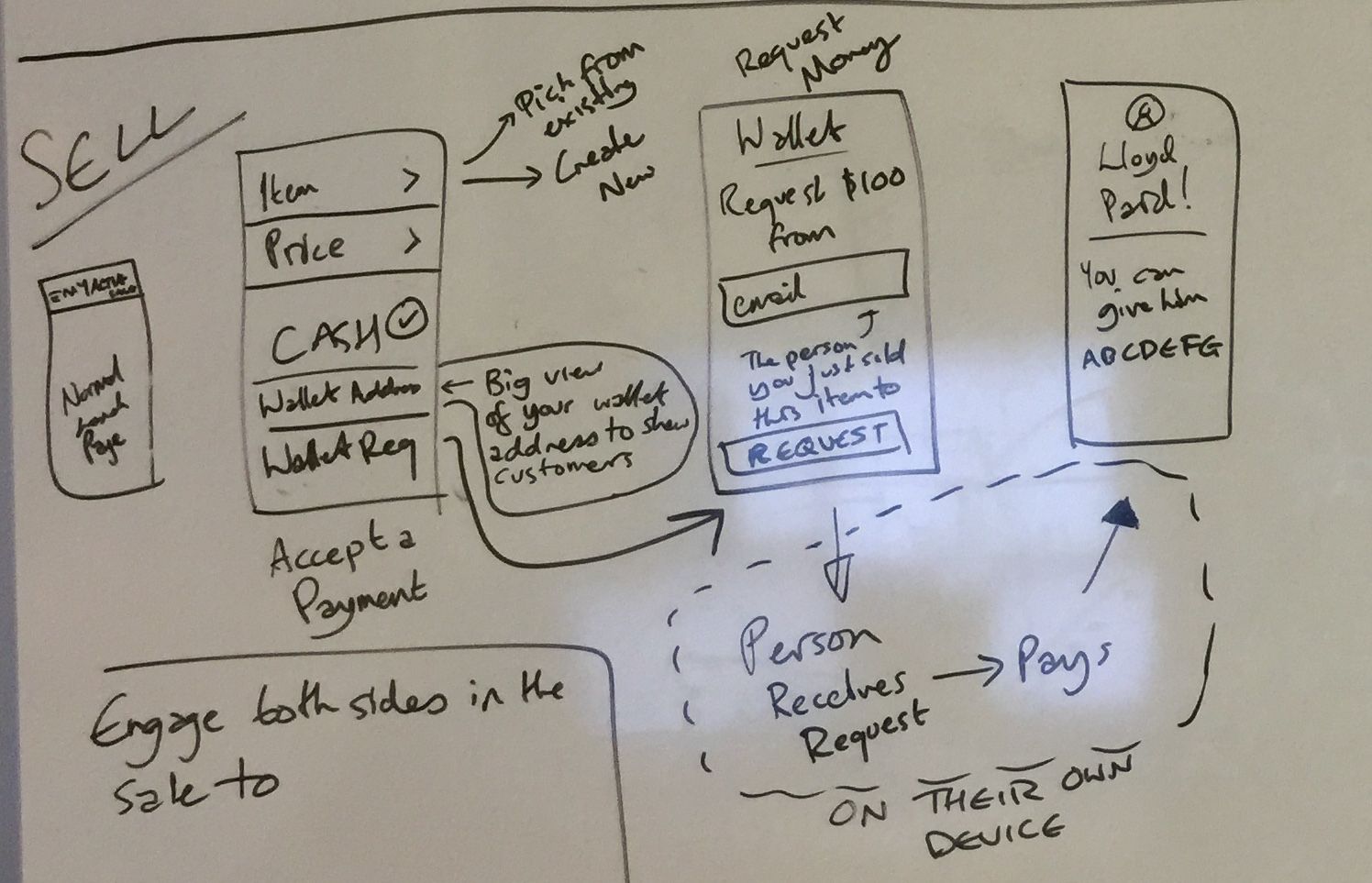
Here I roughed out the flow, in order to ensure I had all the screens I'd need for users to add content. I didn't foresee this being too tough to understand, but when I went to wireframe it (below) I had to modify a few things.
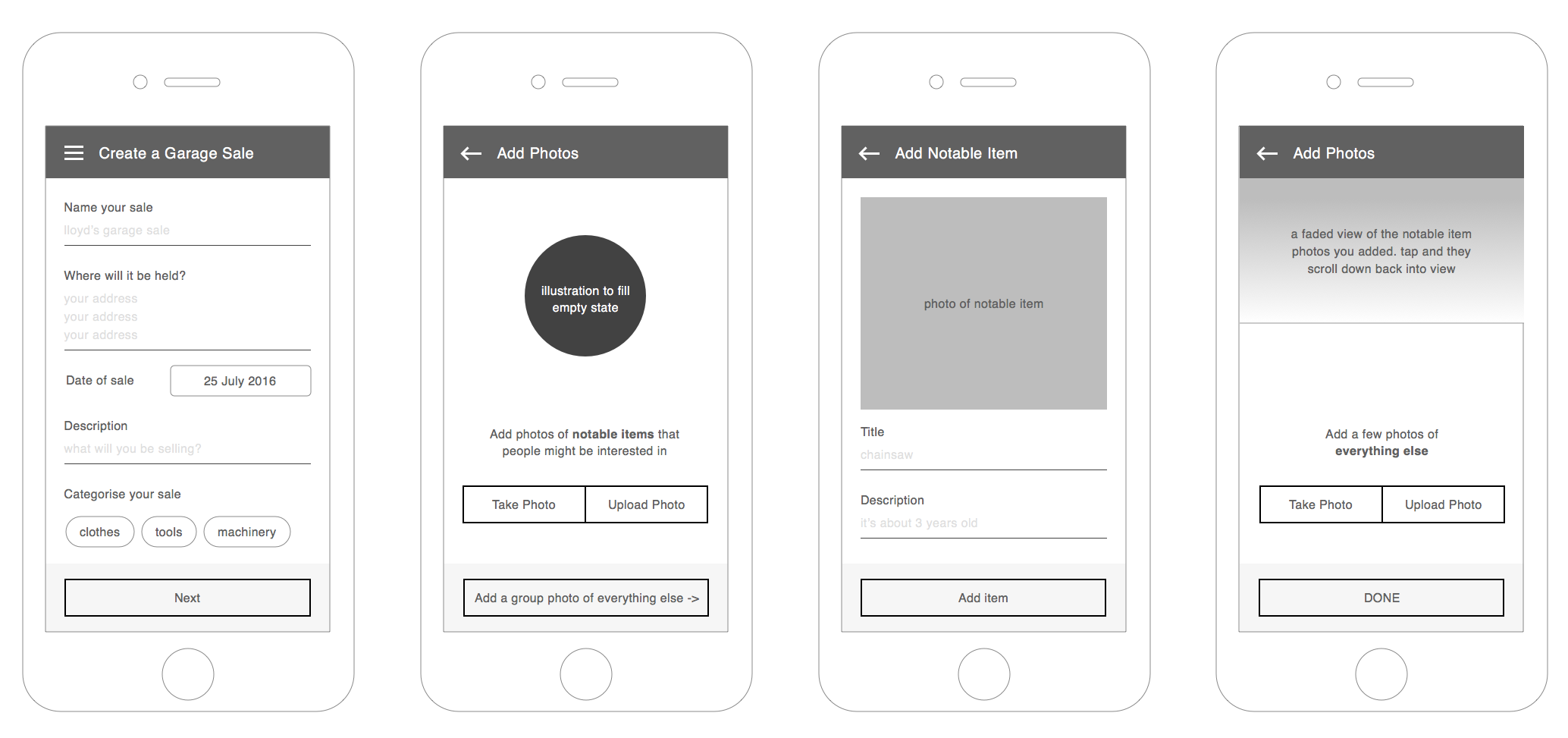
Selling: Wireframe
I modified the flow slightly, to break it down into more managable chunks and so not confuse people. I found it difficult to get around explaining "Take a photo of everything" without implying that you should take an individual photo of everything. By breaking it down into steps of "notable items" and then "everything else" this becomes obvious.
In my whiteboarding, I avoided adding any navigation/titles etc. since I was only considering the flow. Normally information hierarchy/navigation would be a separate exercise, but I skipped it for this project to focus on some more conceptual stuff in the time allocated. I wasn't sure whether buying/selling should be a different app, whether buying should be a site only, etc.
Spreading the word: Mini-site
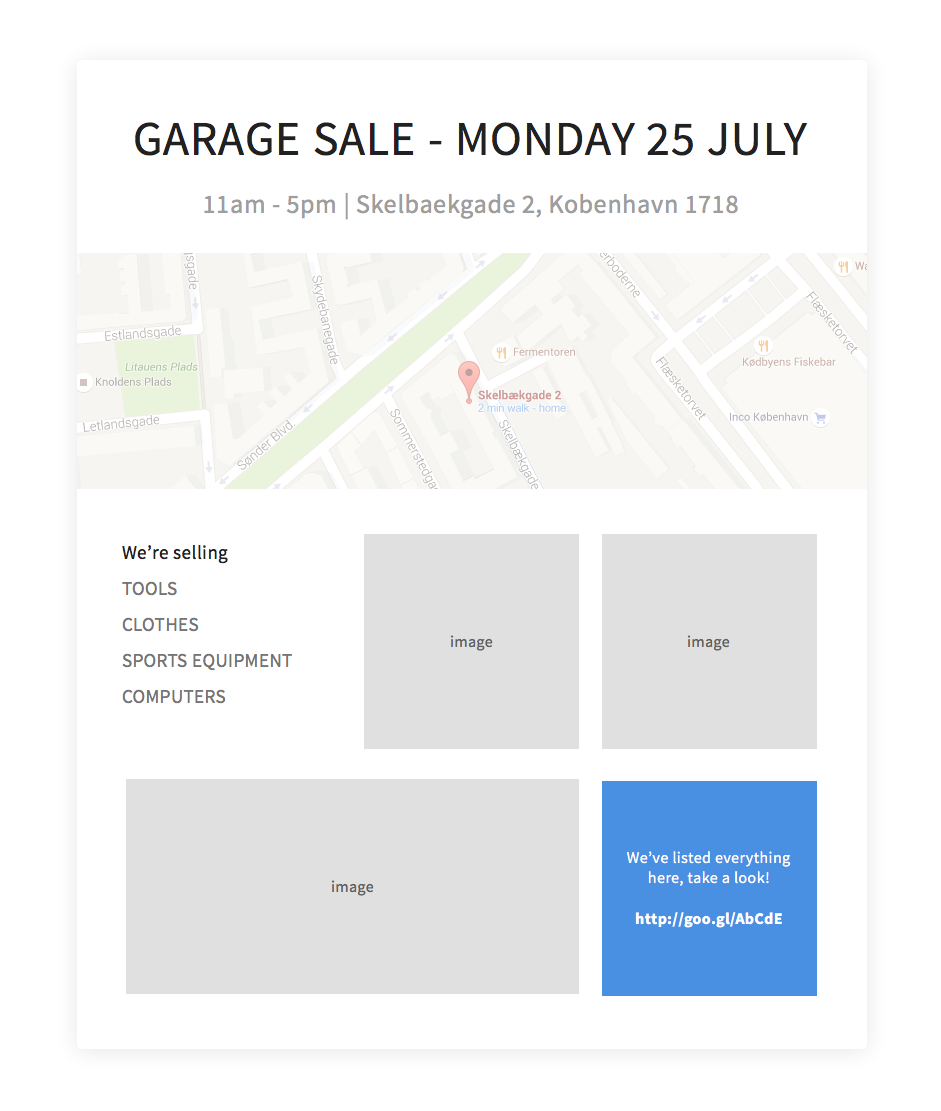
Here's the page people would link to from their flyers, Facebook Groups / Events. It has all the information people need, and plenty of photos to entice people to come take a look (even if they are only from content-generator-plugin).

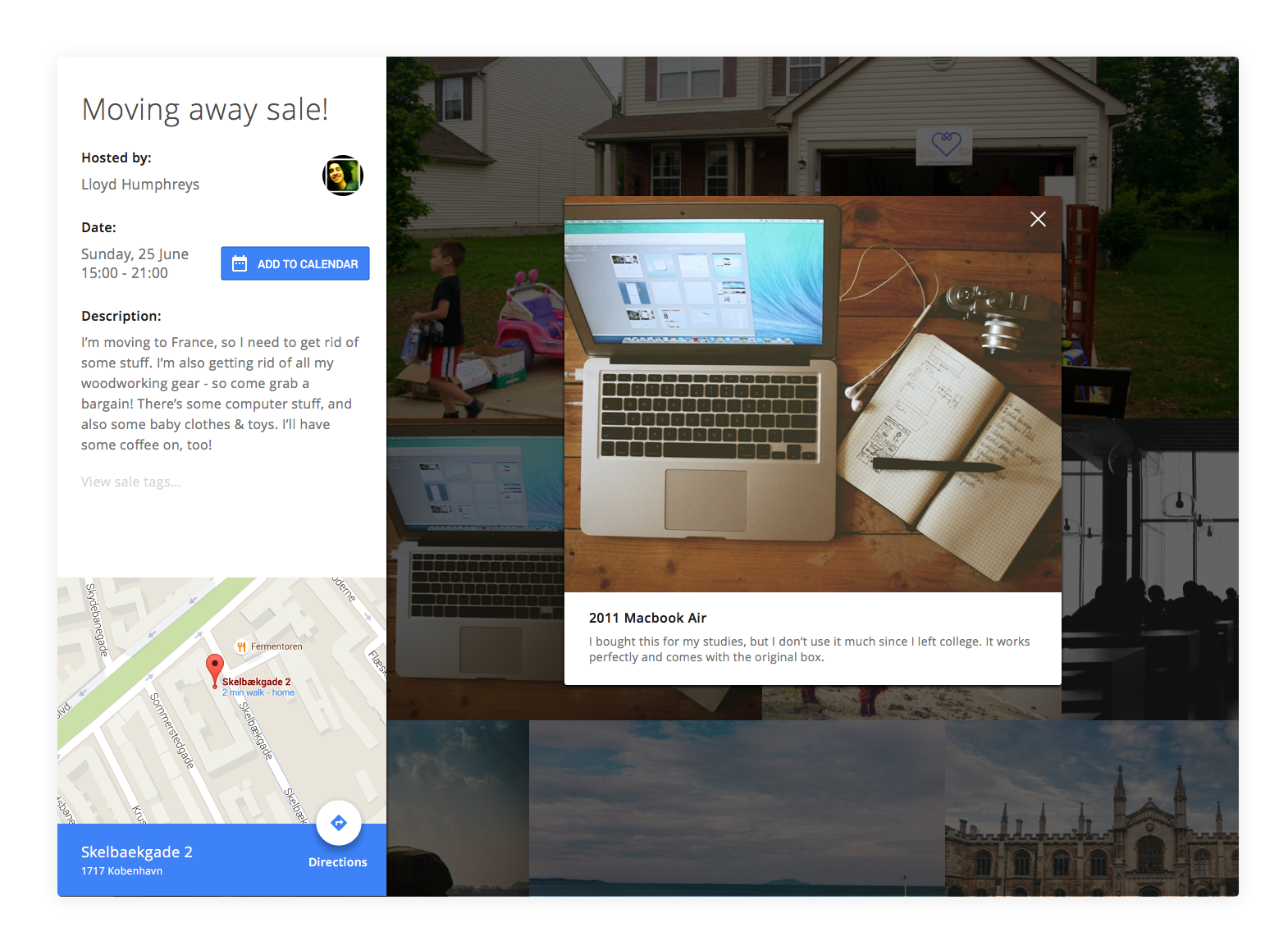
Spreading the word: Printout wireframe
I imagine people would still like to spread the word the old fashioned way and post flyers in their neighbourhood. The solution should create a print-sheet with all the right info, a few photographs and a link back to the full listing. I'm thinking the part with the link should have a short summary, so people could snap a photo and have a bit of info in their camera roll. Another option would be tear-away strips populated with the link. I'd avoid using anything like a QR code, they're not really something people understand how to interact with. I'm not sure whether the map should be the most prominent part of the flyer, but I'm gambling on it since these are locally posted flyers + people will recognise streets and perhaps think to swing by.

Spreading the word: Discovery
Here's an idea I didn't fully persue: discovery, within a browsable marketplace setting. It'd be difficult to get a critial mass of people into an app like this, so I'm of the opinion that some kind of email digest would be better to notify people about things that may interest them - which is the main purpose of the broad categories.
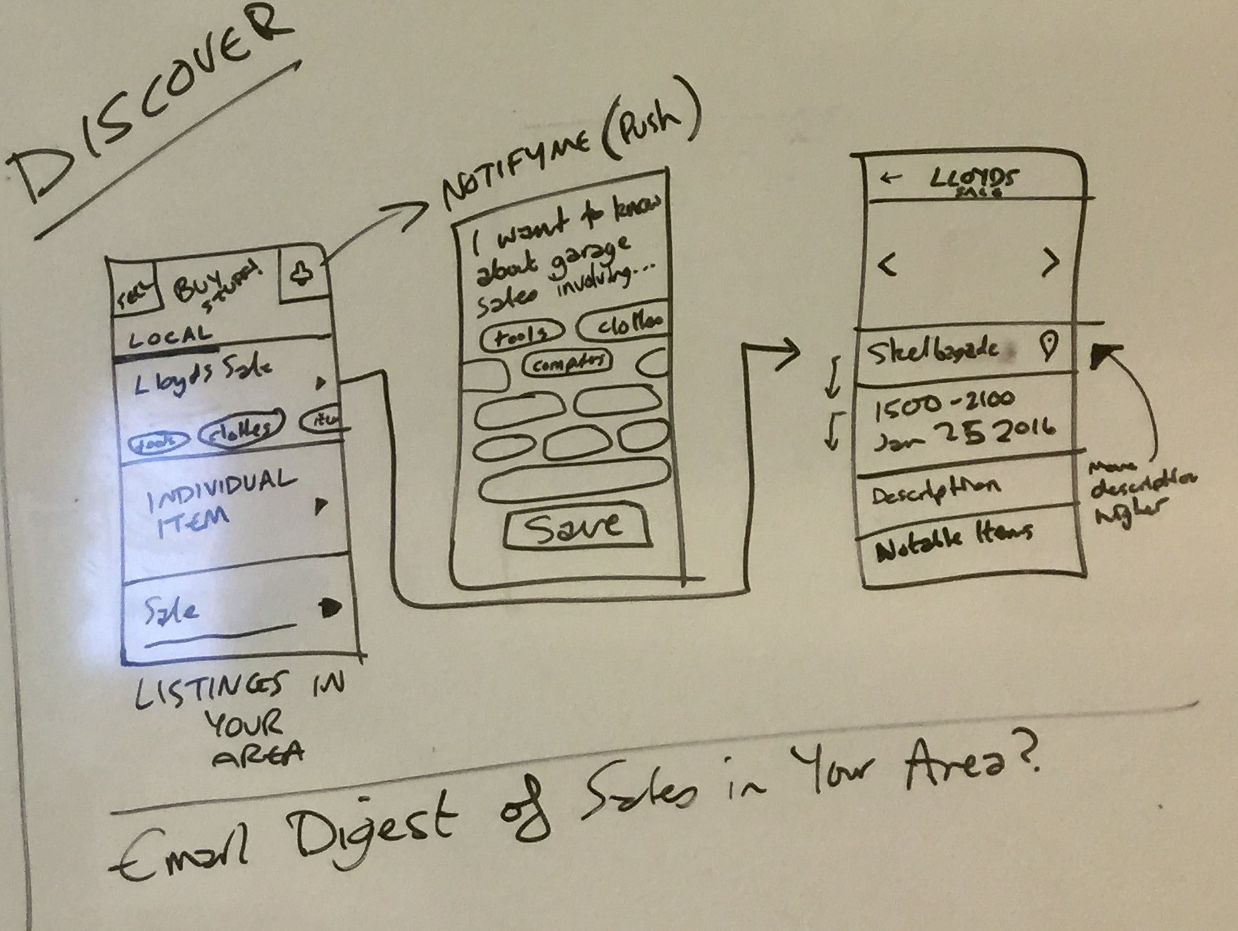
Users would tap categories they're interested in to select them, and tell us how far they're willing to travel. We'd send them an email, or perhaps a push notification, of anything interesting within their radius.
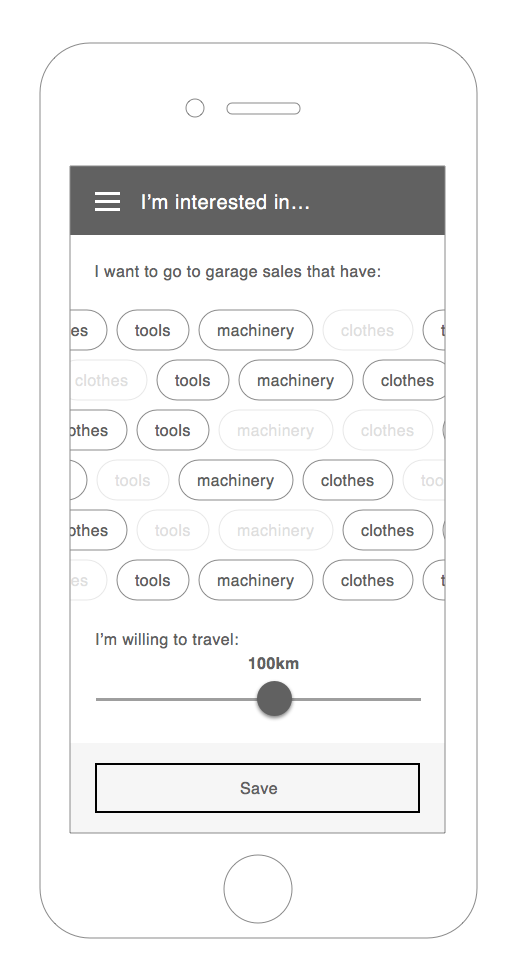
Buying: Wireframe
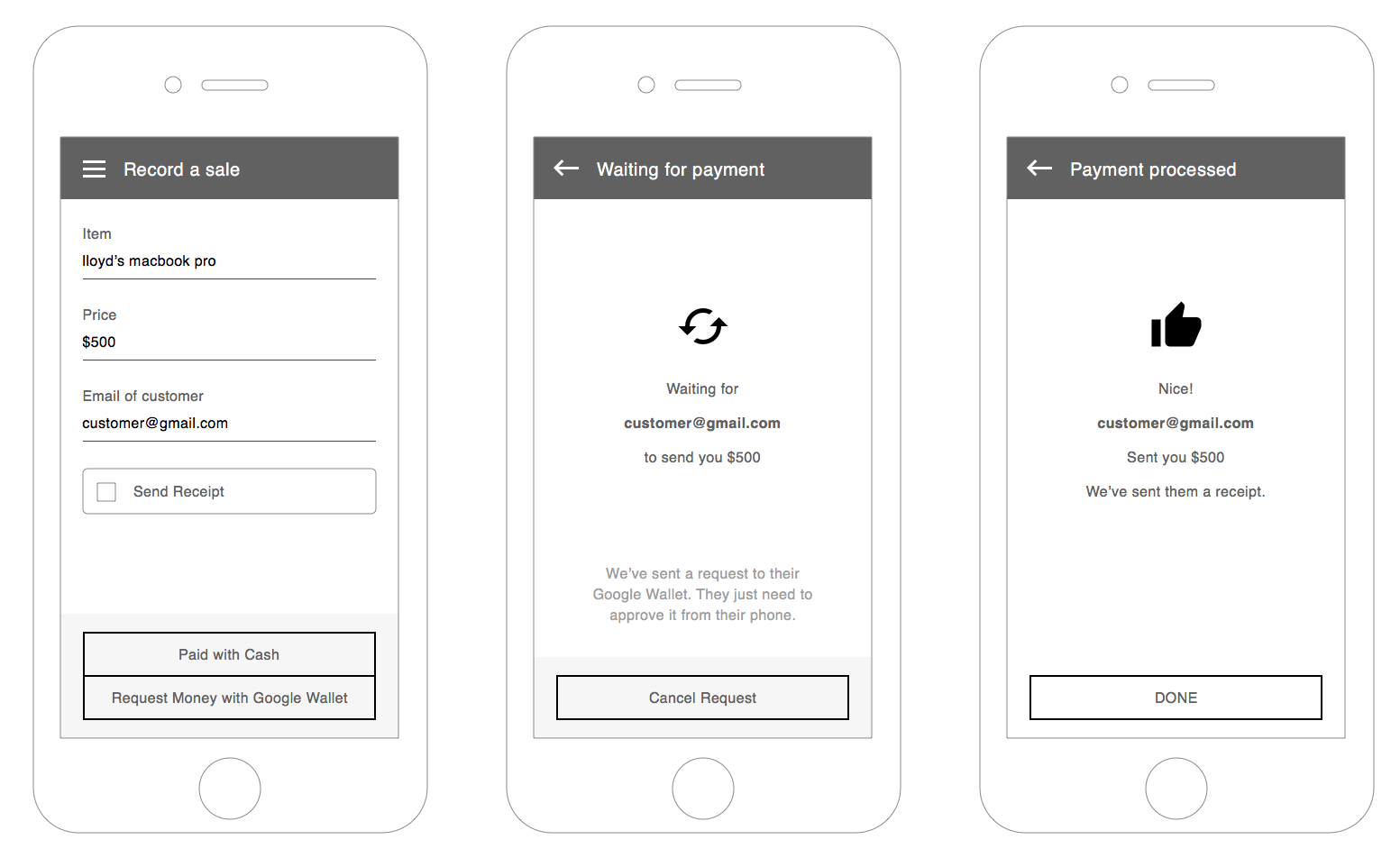
Alternatively...
If we test this and requesting cash proves cumbersome, then perhaps we simply implement something like this. Email addresses can be difficult to spell, and when sending money people want to be certain they're sending it to the right place. In Denmark, we have MobilePay - a near-ubiquitous system to pay through a phone number. Something like this could allow you to easily share the relevant email/phone number with a user, by displaying it in a large text when in landscape mode - much like the Google Translate app does today.

Conclusion
I tried to cover what I deemed to be the most important aspects - Creating, Promoting, Selling. I spent a little over 8 hours on this.
To further expand on the challenge, I'd like to...
- Explore creating an app around exploring local garage sales
- Explore larger ideas - estate sales for example
- Test notifications vs browsing/discovery
- Test flow of creating a sale - do notable items need to be separate? Can all images just have a description and be done with it?
- Explore the idea of a broader "local" sales market, that "collections" of items could be submitted to. Users could then sell individual items too, as I think the market for a "garage sale" is pretty small - and my casual questioning of friends gleaned that people don't do them very often.
- Find out whether people would want strangers to register their interest in a sale, rather than just turning up
- Design some email communication, where charity shops or a recycling company could offer to come and get anything left over for a small fee.
- Some kind of Square dongle to get cash directly into a Google Wallet would be a smooth solution.


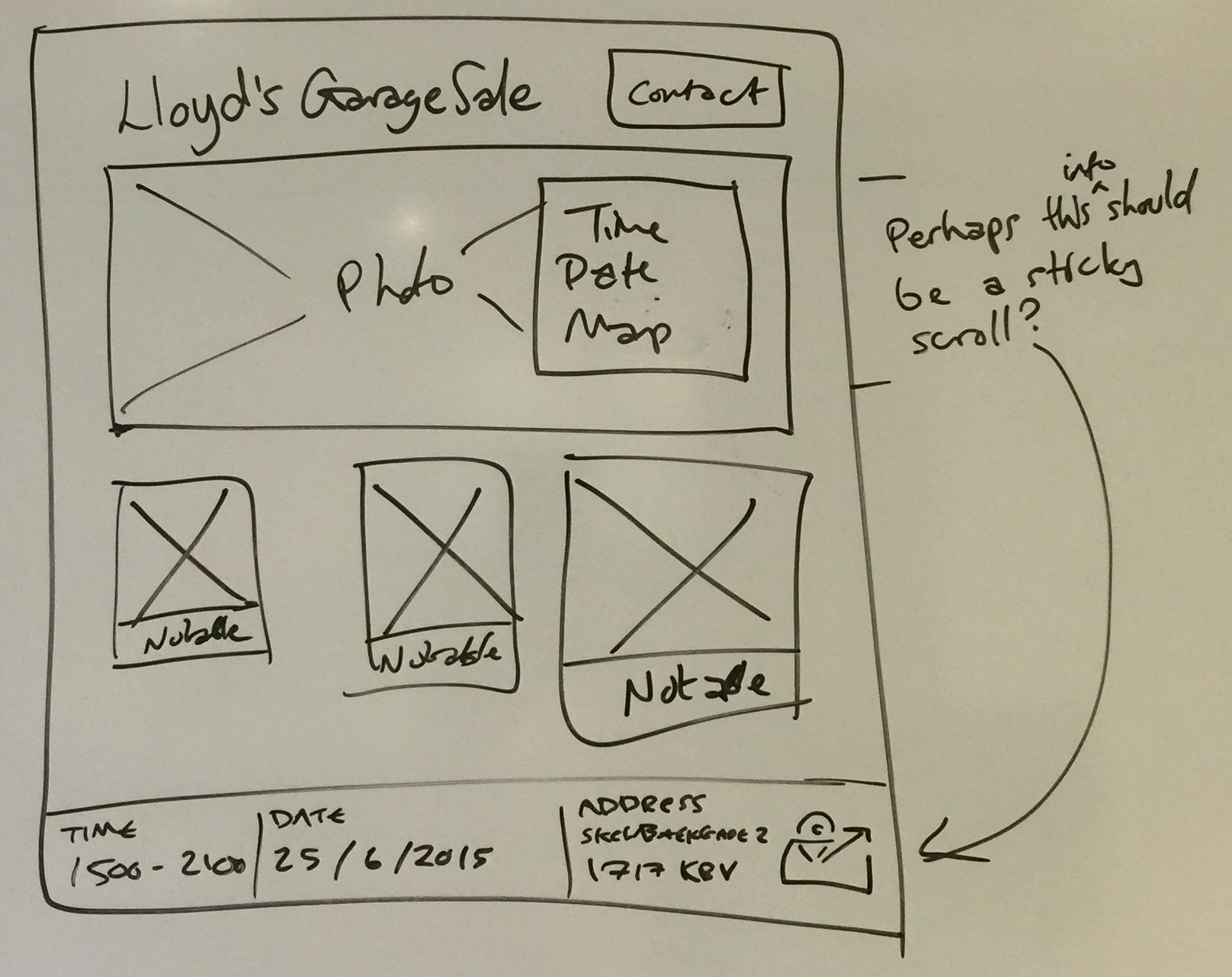
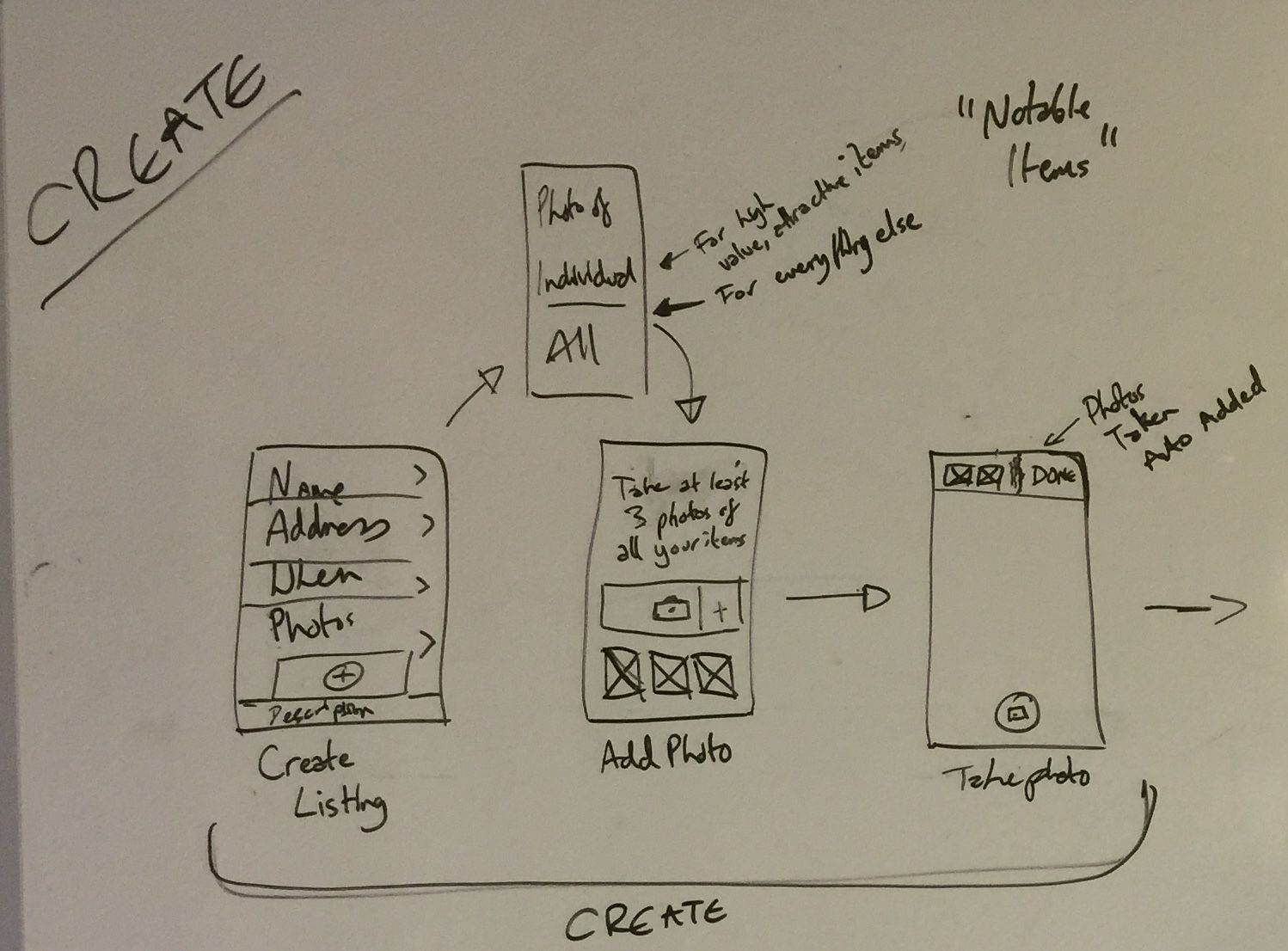
Whiteboarding




Low fidelity mockups


High fidelity mockups